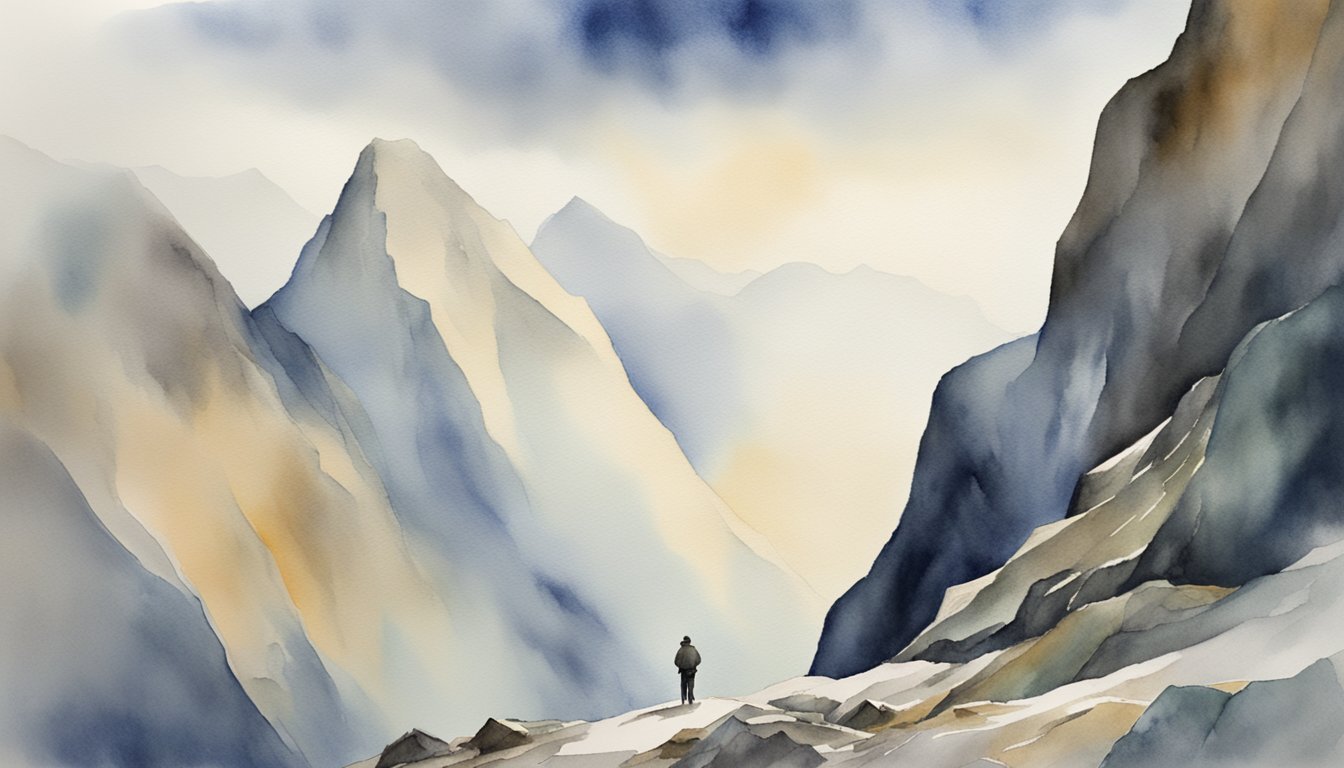Understanding Mount Everest
Mount Everest, known as Sagarmatha in Nepal and Chomolungma in Tibet, is not only the world’s tallest mountain but also a symbol of the sheer magnitude of nature’s wonders. This section unpacks the mountain’s geography, climate, and notable milestones in its climbing history.
Geography and Elevation
Mount Everest stands on the border between Nepal and the Tibet Autonomous Region of China, and is a part of the Himalaya range in Asia. The official elevation of Everest is 29,031.69 feet above sea level, which makes it the highest peak on Earth. This towering height is the result of the tectonic activity between the Indian Plate and the Eurasian Plate.
Climatic Conditions
The climate on Mount Everest is notoriously inhospitable. Sudden avalanches and fierce storms pose substantial risks. Temperatures at the summit can drop to -60 degrees Celsius (-76 degrees Fahrenheit), and winds can reach more than 200 miles per hour. Climate change is impacting Everest’s glaciers, including the Rongbuk and Khumbu, which are retreating at an alarming rate.
Historical Ascents
The first confirmed ascent to the summit was achieved by Tenzing Norgay of Nepal and Edmund Hillary of New Zealand on May 29, 1953. This historical feat was preceded by decades of expeditions, some concluding with success while others resulted in tragedy, contributing to the mountain’s notorious death rate. Today, the legacy of their ascent is a path trodden by many climbers, albeit not without considerable risk from the mountain’s harsh conditions.
Challenges and Considerations in Mountaineering

Mountaineering presents a unique set of challenges and considerations ranging from meticulous expedition preparations to understanding the environmental impact and navigating various climbing hazards.
Expedition Preparations
Climbers must undergo rigorous physical training and secure essential gear before attempting to scale mountains like K2 or Everest. Preparing for a climb also involves studying weather patterns and acquiring necessary permits, especially in regions like Nepal’s Dhaulagiri or the Gilgit-Baltistan region in Pakistan.
Environmental Impact
Mountaineering can significantly affect local ecosystems. For instance, the high traffic of climbers on Mount Everest has led to issues like waste accumulation. Initiatives to minimize climbers’ impact on these environments are crucial, particularly in conservation areas such as Denali’s National Park.
Climbing Hazards
Mountaineers face various hazards, from avalanches on peaks like Nanga Parbat to crevasse falls in the Siachen Glacier. The fatality to summit ratio on mountains such as Annapurna is a stark reminder of the dangers involved in high altitude climbing. Earthquakes and sudden weather changes also pose significant risks to climbers.

